Grand Seiko Nature Of Time: 4 Watches For 24 Seasons
by Anders Modig
The Grand Seiko Nature of Time is a collection of four watches celebrating the Japanese system of dividing the year into 24 small seasons called sekki.
Two of the watches have stainless steel cases and are powered by a mechanical high-beat 9S85 caliber, while the other two are housed in titanium and run on Spring Drive Caliber 9R65.
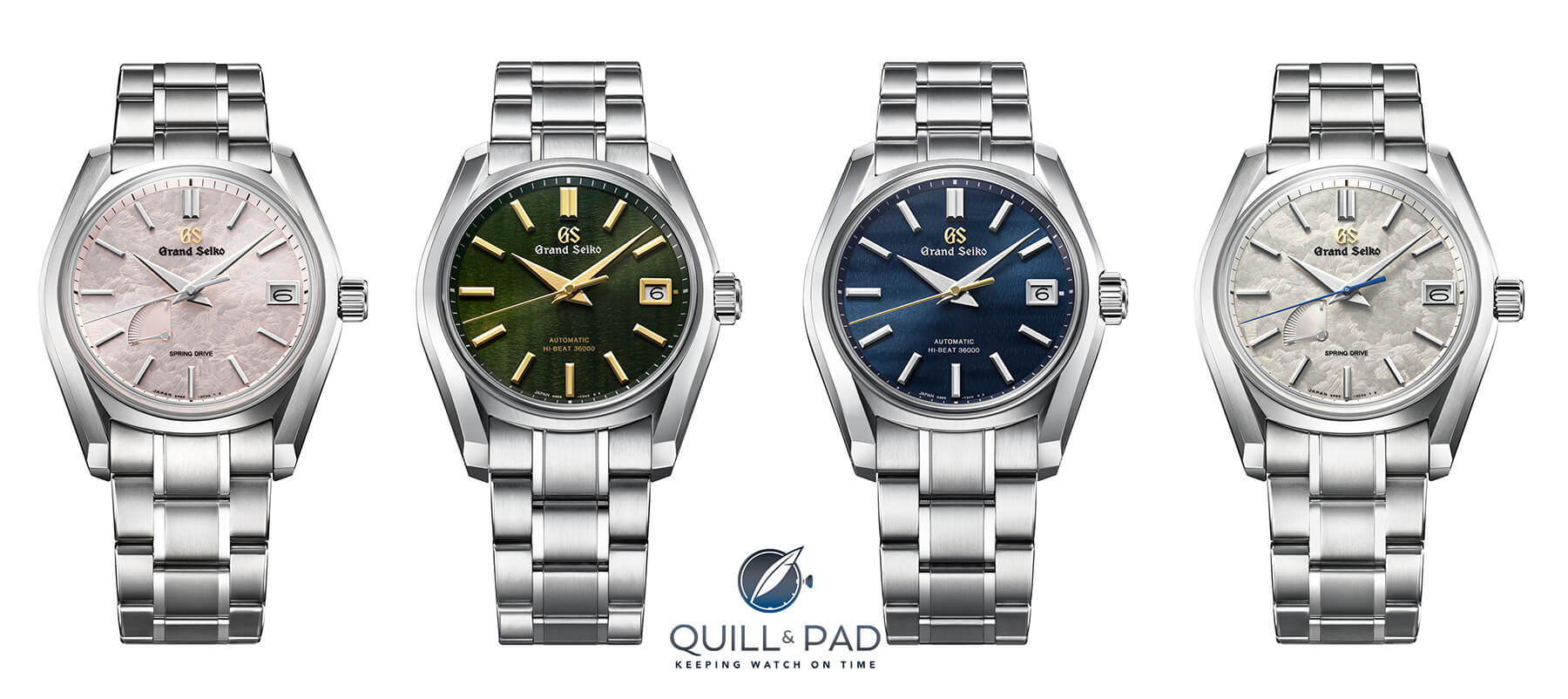
Grand Seiko Nature of Time collection
The dials of all four watches evoke nature. And celebrating the collection, Grand Seiko is collaborating with Japanese flower artist Azuma Makoto.
Lovers of Seiko’s vintage timepieces might recognize the Nature of Time collection as it is a reinterpretation of the 62GS, the first automatic Grand Seiko. This model was produced between 1967 and 1969 in rather small numbers and is much sought after on today’s secondary market.
From Risshun, the bursting moment of the beginning of spring, to Daikon, the glistening of winter’s ice-cold slumber, the Japanese passage of time is divided not into four seasons, but into 24 sekki.
These 24 ever-changing seasons make for a poetic journey during which nature awakens, blossoms, matures, and settles into slumber. Each sekki has its moment in time, while simultaneously performing its ritual symbol as a harbinger of change.
For the Nature of Time collection, Seiko invited floral artist Azuma Makoto to collaborate. A revered artist in Japan, Makoto is renowned for spectacular works like 2014’s Exobitanica project in which he launched a bonsai into the stratosphere.
Unlike most artistic collaborations in the watch industry, where the artist brings ideas to the manufacture to create a timepiece inspired by the art, Grand Seiko and Makoto did it the other way around.
Inspired by the four timepieces and Grand Seiko’s approach to the seasons, Makoto has created a bursting, floral sculpture capturing the essence and beauty of all stages of life in all seasons. Below is a film of the installation.
Now, let’s take a closer look at the four timepieces representing four of the 24 Japanese sekki.
Grand Seiko Shunbun Special Edition Reference SBGA413
The pink dial of the Shunbun Special Edition Reference SBGA413 captures the spirit of the fleeting sakura season, during which the cherry blossoms burst forth. The dates vary somewhat, but during Shunbun the spring or vernal equinox takes place.

Cherry blossoms in Japan (photo courtesy PiccoloNamek/Wikipedia)
Unlike its inspiration from the 1960s, the modern watch features a 40 mm case crafted in high-intensity titanium with a crown traditionally placed at 3 o’clock (on the original it is placed at 4 o’clock).
The classic bezel-free design with a box-shaped sapphire crystal with anti-reflective coating bathes the theatrical dial in light. Depending on the angle, the textured, pink-lacquered dial reminiscent of a cherry blossom petal reflects light differently.
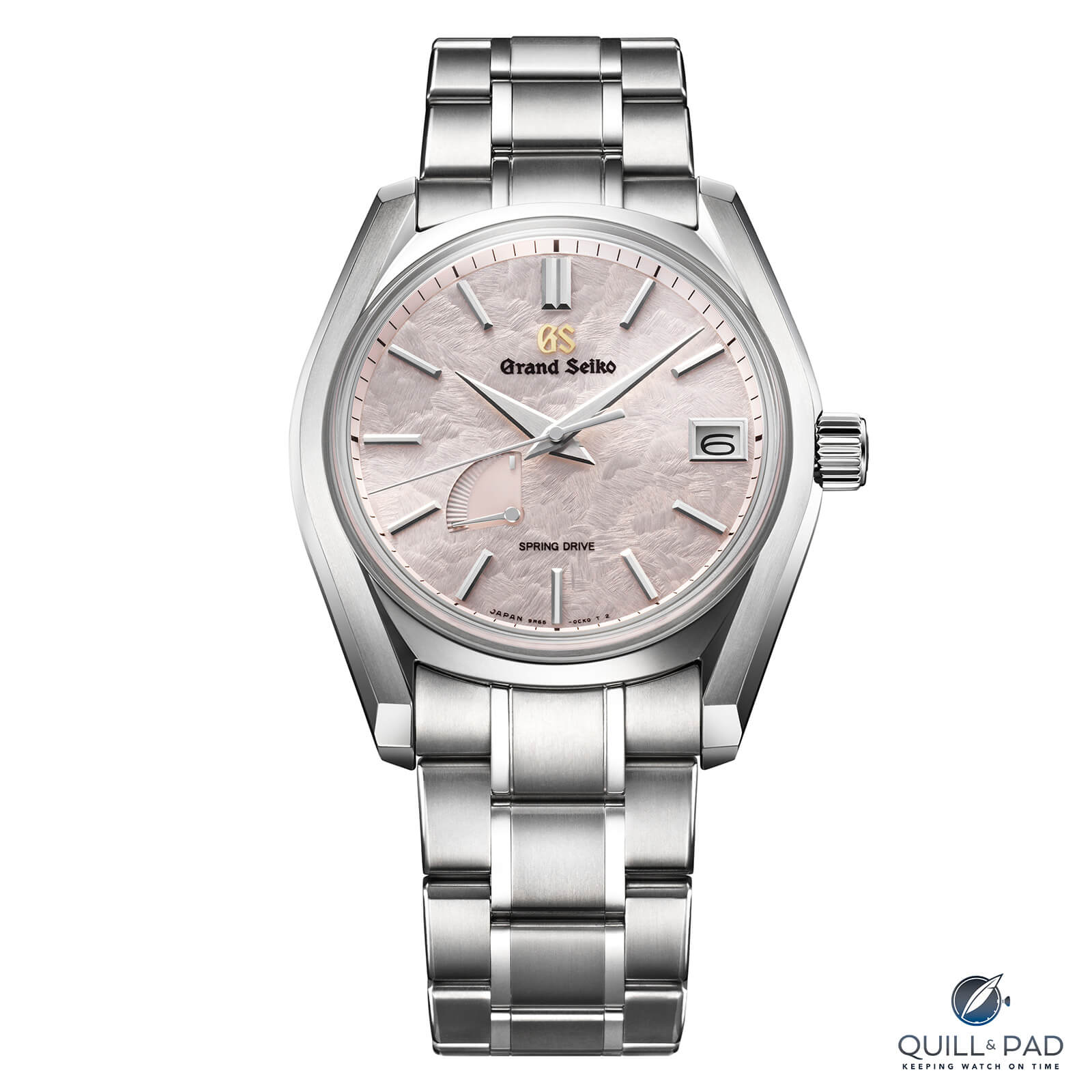
Grand Seiko Shunbun Special Edition Reference SBGA413
This ranges from peaking sakura (cherry blossom season) to a soft, watered-down shimmering pastel. The dial features polished silver indexes traversed by polished silver dauphin-shaped hands instead of Arabic numerals. Just below 12 o’clock a golden GS logo announces the timepiece’s origin.
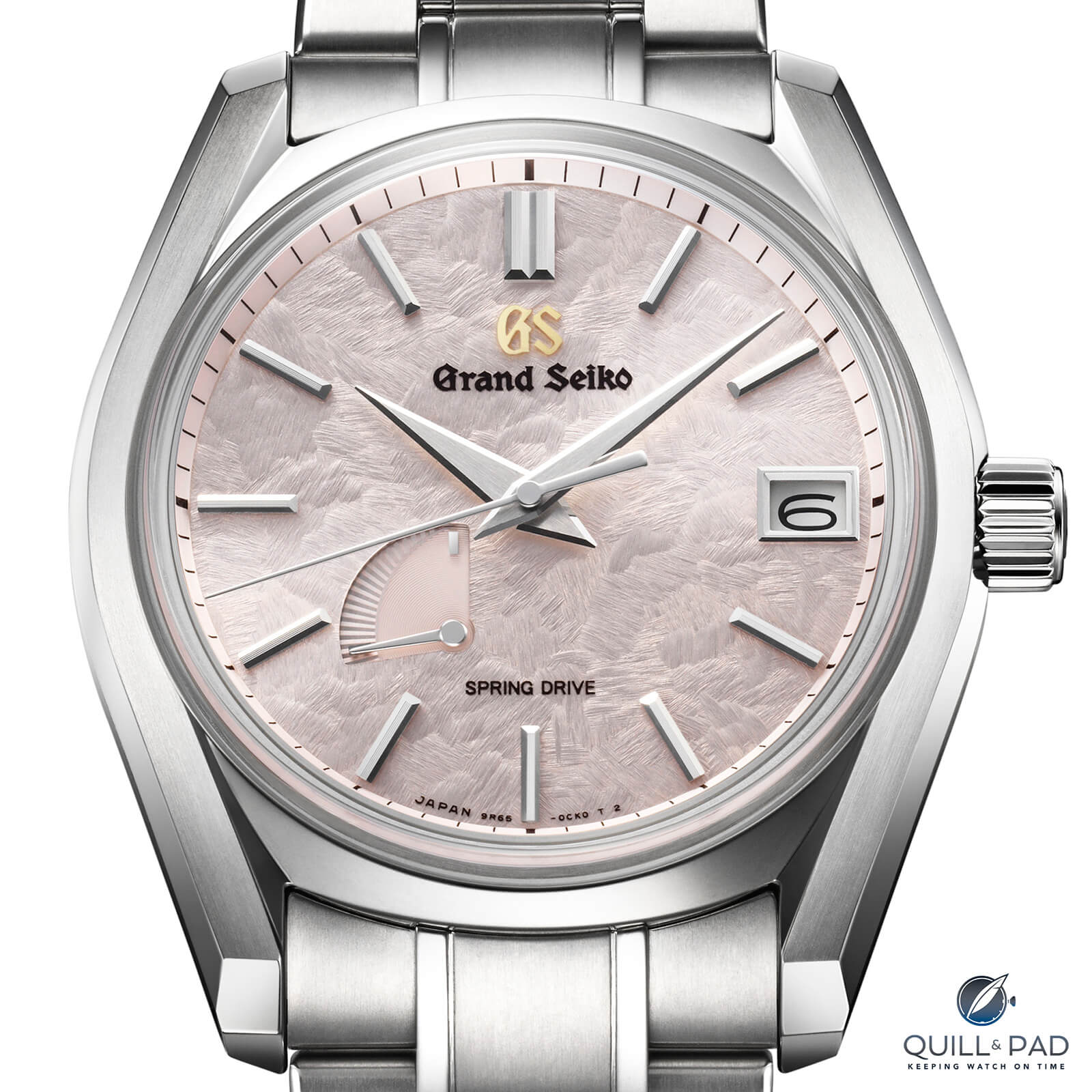
Grand Seiko Shunbun Special Edition Reference SBGA413
The spring model is suitably equipped with a Spring Drive 9R65 caliber. Introduced in 2003, it provides 72 hours’ worth of power reserve.
The extremely accurate (±15 seconds per month) Spring Drive system is mechanically powered by a mainspring. This drives a series of gears connecting to a rotor generating a small electrical charge, which in turn activates an integrated electronic circuit with a quartz oscillator.
This gives the Spring Drive a precision superior to mechanically regulated watches.
During a dinner I hosted a few years ago, Jean-Marc Wiederrecht of Agenhor shared his view that the Spring Drive possibly would have received greater accolade among hardcore mechanical watch collectors had it been invented in Switzerland.
What do you think?
For more information, please visit www.grand-seiko.com/us-en/collections/sbga413g.
Quick Facts Grand Seiko Shunbun Special Edition Reference SBGA413
Case: 40 x 12.8 mm, titanium, water resistance 10 bar
Movement: Spring Drive Caliber 9R65, +15 seconds per month (average), 72-hour power reserve
Functions: hours, minutes, seconds; date, power reserve
Price: $6,300
Grand Seiko Rikka Special Edition Reference SBGH271
The deep, lush, green dial of the rikka model symbolizes the passing of spring into summer. Housed in the interpretation of the classic 62GS, it is housed in a mirror polished, brushed stainless steel case with a wide dial opening thanks to its bezel-free construction.
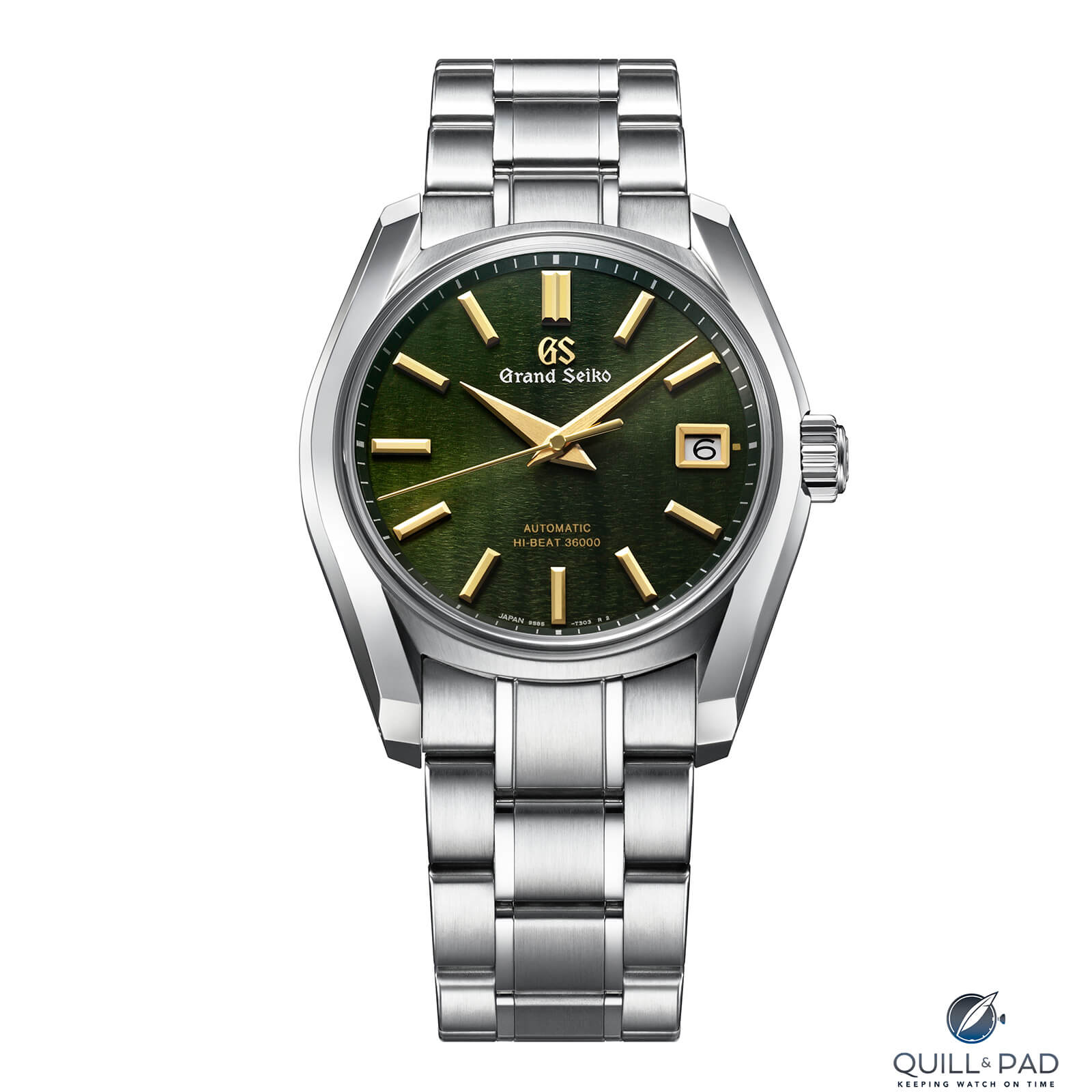
Grand Seiko Rikka Special Edition Reference SBGH271
This unorthodox approach crowned with an anti-reflective, box-shaped sapphire crystal does not compromise the modern collection’s water resistance of 100 meters. Atop the shimmering racing green dial, the golden hour markers are Zaratsu polished, as are the shiny parts of the case.
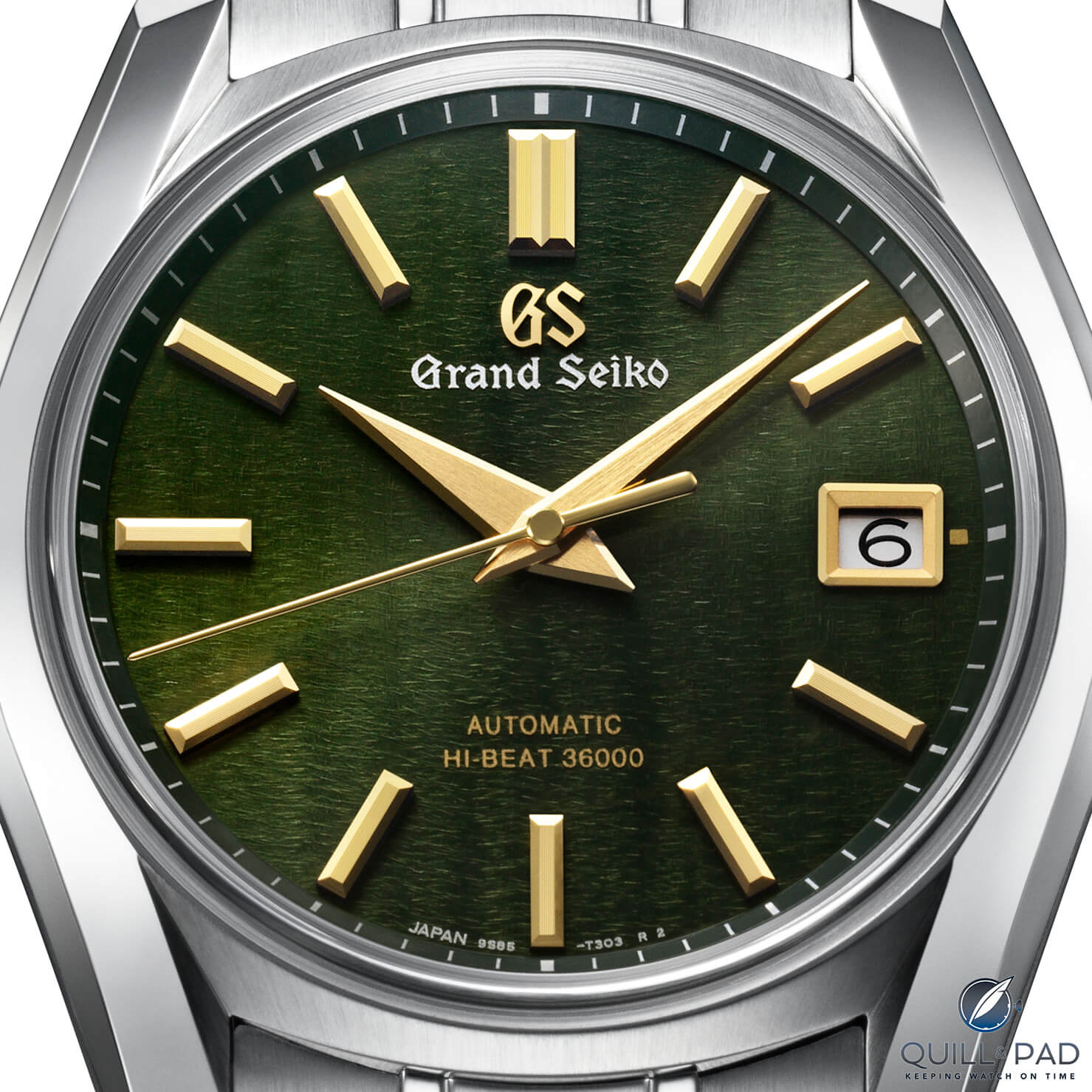
Grand Seiko Rikka Special Edition Reference SBGH271
Zaratsu is a proprietary Seiko polishing style that produces extremely crisp lines.
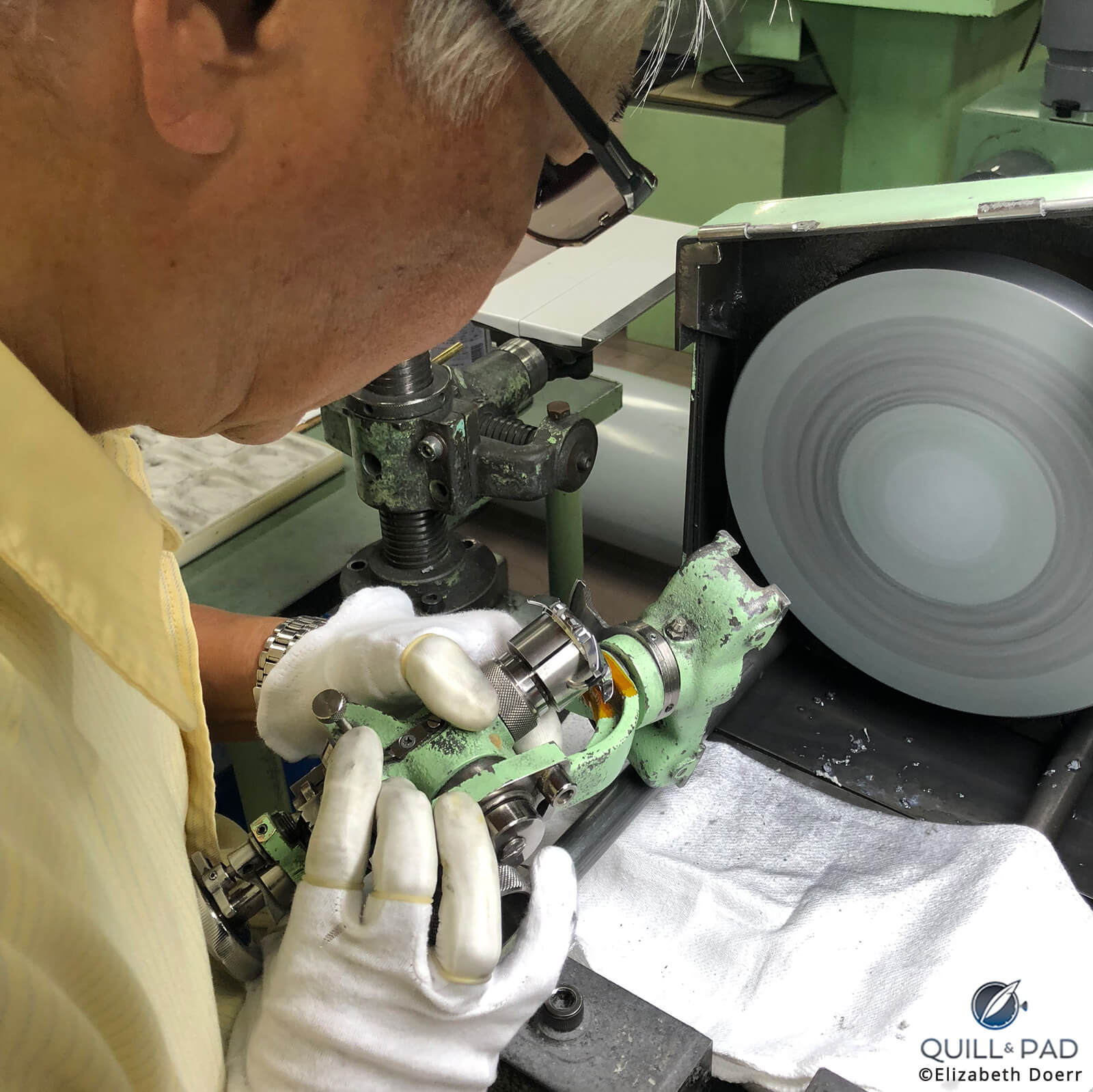
Zaratsu polishing at the Seiko factory
The Grand Seiko Rikka Special Edition Reference SBGH271 is driven by Caliber 9S85, Seiko’s mechanical high-beat movement (5 Hz/36,000 vph) with an accuracy of -3 to +5 seconds per day.
Recent developments of this caliber include a new hairspring alloy called Spron 610, boasting twice the impact resistance and three times the magnetic resistance of the previous material, as well as a new alloy called Spron 530 that elevates the power reserve to 55 hours.
For more information, please visit www.grand-seiko.com/us-en/collections/sbgh271g.
Quick Facts Grand Seiko Rikka Special Edition Reference SBGH271
Case: 40 x 12.9 mm, stainless steel
Movement: automatic Caliber 9S85, 5 Hz/36,000 vph frequency (-3 to +5 seconds per day), 55-hour power reserve
Functions: hours, minutes, (hacking) seconds; date
Price: $6,300
Grand Seiko Shubun Special Edition Reference SBGH273
The dial of the Shubun Special Edition Reference SBGH271 is a dark blue to celebrate the autumnal equinox and is reminiscent of autumn clouds as they float through the moonlit sky.
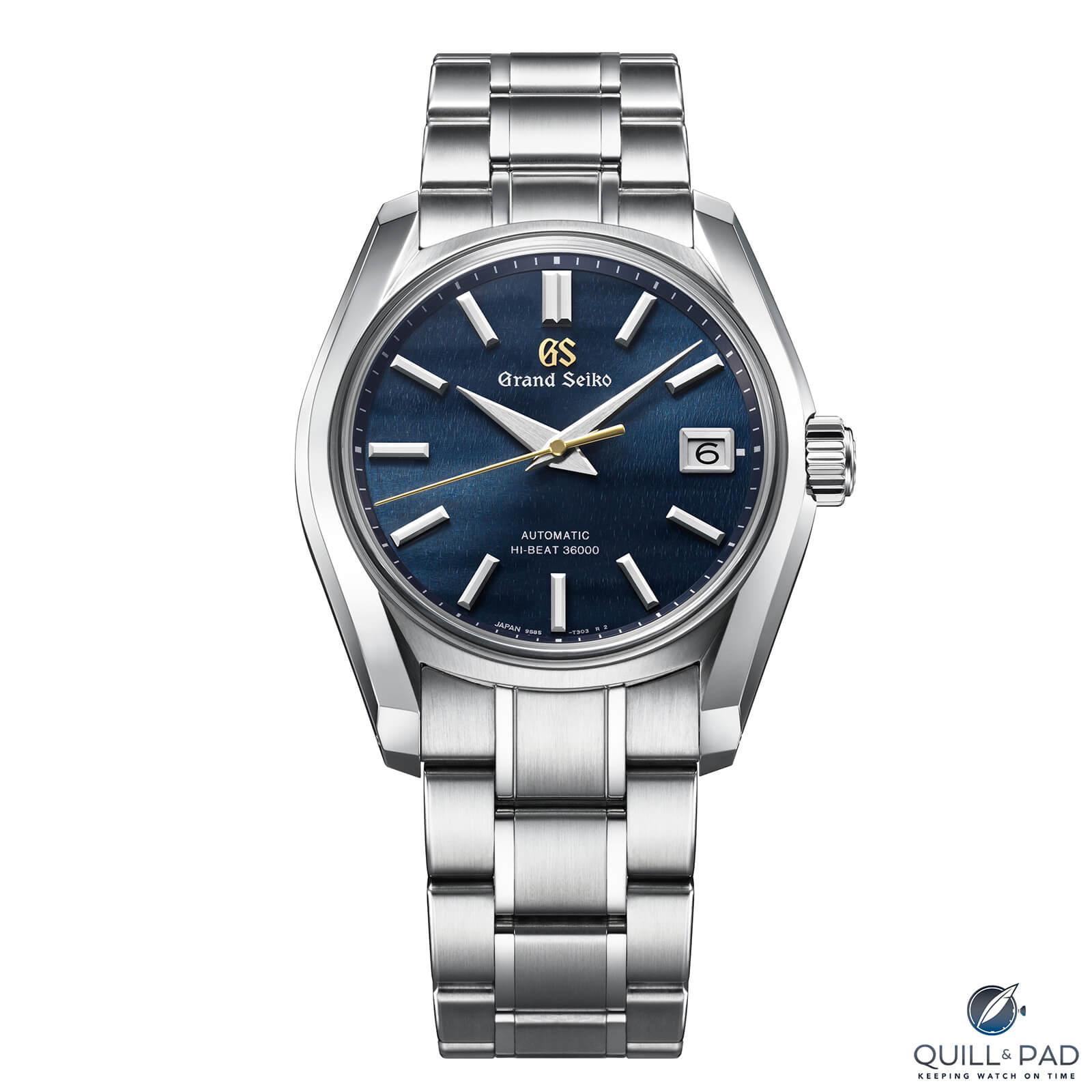
Grand Seiko Shubun Special Edition Reference SBGH273
The stainless steel case and the integrated three-link bracelet are great examples of Grand Seiko’s texture-mixing designs. The angular sides of the 40 mm case are mirror polished with extremely crisp lines in the company’s Zaratsu tradition, which interplays nicely with the vertically satin-brushed bracelet.
Note that the outer edges of the middle link are also high-polished, which lends the bracelet instant recognition. For a secure fit, the bracelet’s triple-folding clasp is equipped with an easy-to-use push-button release.
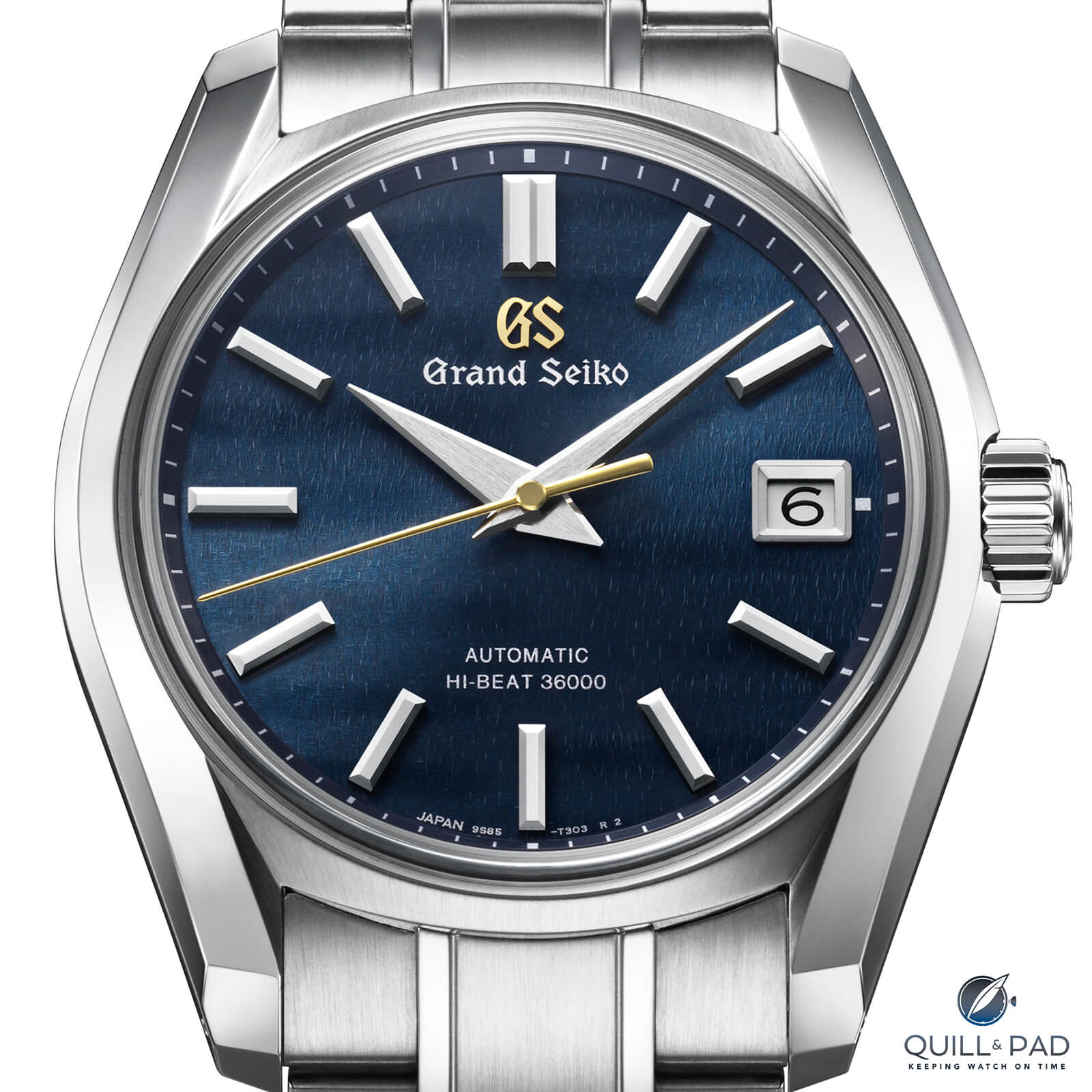
Grand Seiko Shubun Special Edition Reference SBGH273
The silver dauphin hands circling the dial also showcase these different finishes, with a vertical brush on top and mirror-polished chamfer. The same approach is used on the sharp-angled indexes.
Caliber 9S85 is a high-beat 5 Hz/36,000 vph movement with C.O.S.C.-certified precision of -3 to +5 seconds per day. With a power reserve of 55 hours, one can conclude that Grand Seiko has resolved the challenge of combining the high rotational speed of ten oscillations per second with durability and a generous power reserve.
Seiko also puts each high-beat movement through a rigorous 17-day testing period before encasing it.
For more information, please visit www.grand-seiko.com/us-en/collections/sbgh273g.
Quick Facts Grand Seiko Shubun Special Edition Reference SBGH271
Case: 40 x 12.9 mm, stainless steel
Movement: automatic Caliber 9S85, 5 Hz/36,000 vph frequency (-3 to +5 seconds per day), 55-hour power reserve
Functions: hours, minutes, (hacking) seconds; date
Price: $6,300
Grand Seiko Taisetsu Special Edition Reference SBGA415
Taisetsu is the sekki accompanying the deep snow of winter.
Thanks to a special brushing technique, this watch’s dial is reminiscent of a meteorite dial. When playing with the watch under the sun or bright light, the plethora of directions of these millimeter-long brushstrokes really captures what it set out to do: symbolize snow glittering against sunlight.
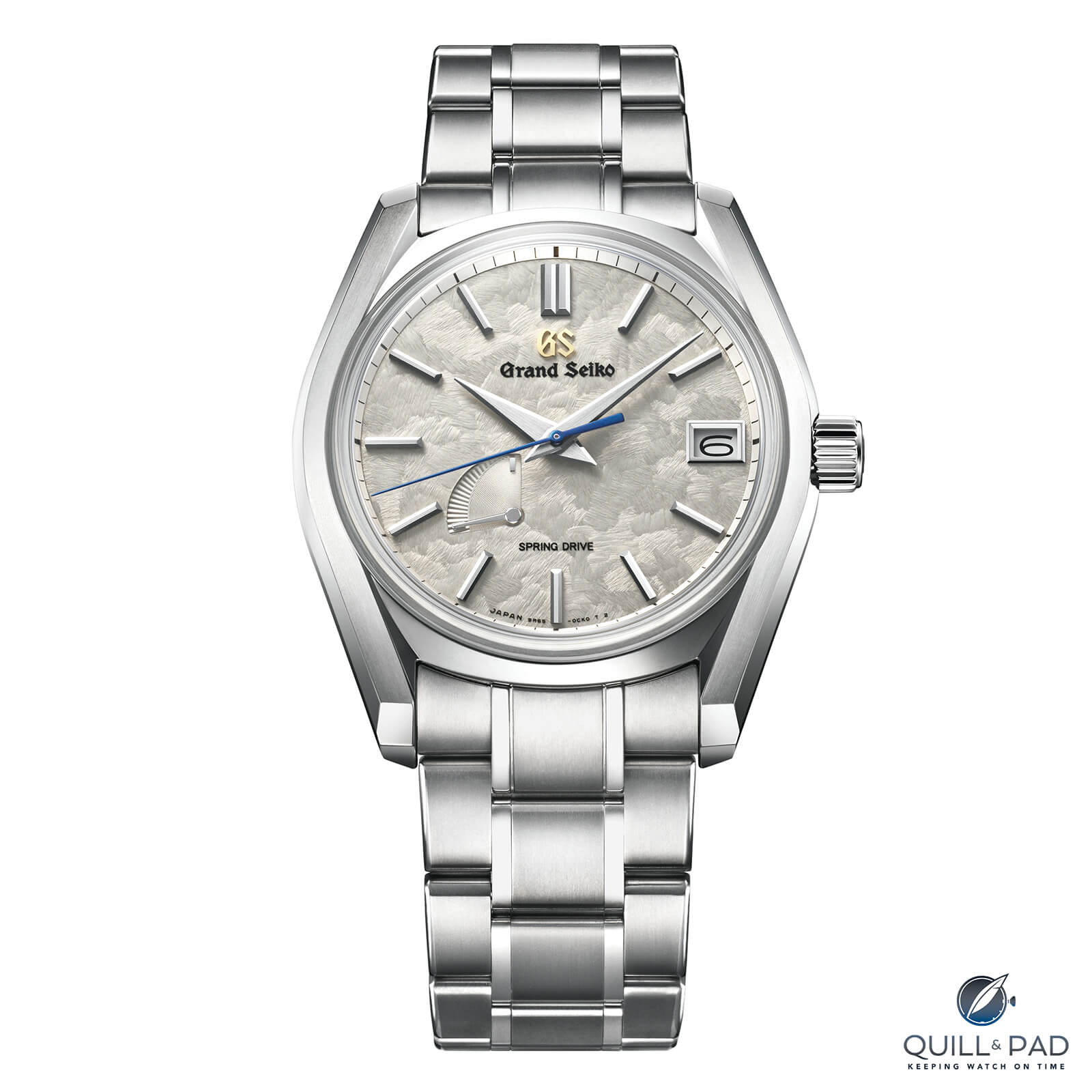
Grand Seiko Taisetsu Special Edition Reference SBGA415
The high-intensity, 40-millimeter titanium of the case has a vertically brushed top and polished sides. Like the other three models in this collection, the bezel-free design with a box-shaped sapphire crystal provides a generous view of the “seasonal” dial.
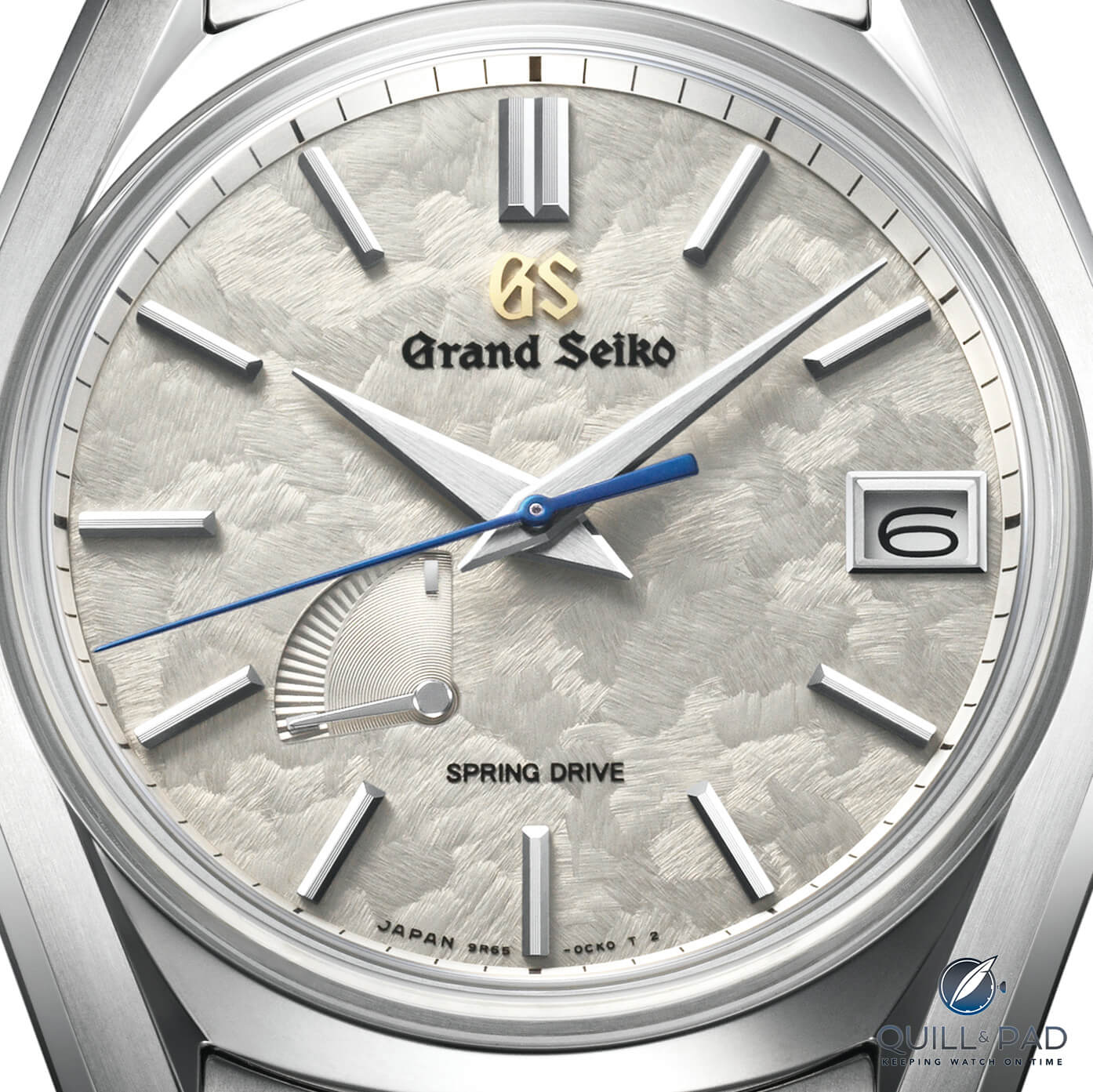
Grand Seiko Taisetsu Special Edition Reference SBGA415
The seamless integration between the titanium case and the bracelet with a push button-release, triple-folding clasp is on par with some of the iconic designs we know from 1970s sports watches. Though perhaps with a more comfortable fit.
The Grand Seiko Taisetsu Special Edition Reference SBGA415 is powered by the 9R65 Spring Drive caliber, which achieves a 72-hour power reserve thanks to interesting technology: the trigger of the quartz oscillator is similar to that of a bicycle dynamo, its glide wheel making eight full revolutions every second to generate an electrical current. If the glide wheel moves too fast, a magnetic brake is applied, ensuring the movement’s precision.
For more information, please visit www.grand-seiko.com/us-en/collections/sbga415g.
Quick Facts Grand Seiko Taisetsu Special Edition Reference SBGA415
Case: 40 x 12.8 mm, titanium
Movement: automatic Caliber 9S85, 5 Hz/36,000 vph frequency (-3 to +5 seconds per day), 55-hour power reserve
Functions: hours, minutes, (hacking) seconds; date
Price: $6,300
* All watches mentioned here are U.S. special editions and not available internationally.
You may also enjoy:
Grand Seiko T0 Constant Force Tourbillon: I Couldn’t Believe My Eyes
Seiko Presage: A 2020 Overview With Some New Watches
Depth-Testing My Seiko SKX013 Dive Watch: Jumping In At The Deep End
Why I Bought It (Despite The Strap And Buckle): Grand Seiko Blue Snowflake Reference SBGA407



Leave a Reply
Want to join the discussion?Feel free to contribute!